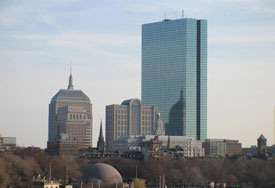Category Archives: Boston Commercial Real Estate
0 John Hancock to Return to Back Bay
Back Bay becomes home to John Hancock – 2.0.
From Bisnow:
The insurance company is returning its headquarters to Back Bay, where it already has a 1.2M SF campus and employs over 2,000. Its 465K SF Seaport headquarters at 601 Congress St. employs 1,100 people, all of whom will be transferred by the end of 2018 to two Back Bay buildings at 200 Berkeley St. and 197 Clarendon St., the Boston Business Journal reports.
[John Hancock CEO Marianne] Harrison sent a memo to Hancock employees Tuesday, saying the company had enough space in Back Bay, given the number of local employees and how many work remotely. Along with the weather beacon-capped 200 Berkeley and 197 Clarendon, Hancock has approval to build a third office tower in Back Bay. The 26-story, 388-foot tower at 380 Stuart St. could be developed for Hancock or another tenant.
0 Boston Continues to Lure Large Corporate Tenants
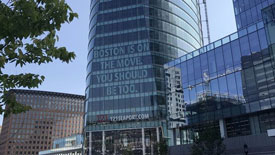
Credit: Courant
Boston continues to win large corporate tenants from our neighboring states.
In an article on the Courant, Alexion said “its headquarters would move from New Haven to Boston to support plans for growth…[noting] Boston will provide access to a ‘larger biopharmaceutical talent pool and a variety of life-sciences partners to further support future growth initiatives.’”
The full article is available on the Courant.
Related Office Space Listings
Seaport Office Space for Lease
0 Horticultural Hall at 300 Massachusetts Ave. Sold
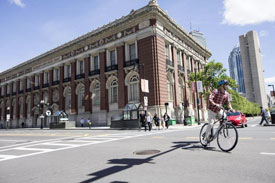
Credit: Boston Globe
At the intersection of Huntington and Mass. Ave stands Horticultural Hall which will have a new owner, Marcus Partners. The building is 45,000-square feet and is scheduled for upgrades to the lobby and entrances.
According to the Boston Globe, “Horticultural Hall’s tenants include the Museum of Fine Arts’s William Morris Hunt Memorial Library, the New England Conservatory of Music, and the offices of Boston magazine.”
You can read more about the prospective updates to Horticultural Hall on the Boston Globe.
0 Boston vs. NY – Commercial Real Estate Edition: Battle for Aetna

Credit: BBJ
It appears the exodus from Connecticut continues as speculation swirls around Aetna’s search for a new home. Perhaps it is best summed up as a Yankees Red Sox battling in a pennant race and time will tell what city will be victorious. Boston will continue to attract world class companies of all sizes and the talented individuals who will be employed by them.
From Bizjournals.com:
“We are in negotiations with several states regarding a headquarters relocation, with the goal of broadening our access to innovation and the talent that will fill knowledge economy-type positions,” Aetna said in a statement on Wednesday.
The city of Boston in July 2015 had named Aetna a “top target” following proposed tax-law changes in Connecticut, according to emails obtained by the Boston Business Journal in a public-information request.
0 Office Space Trends: The Cozy Cubby
Office space continues to evolve with creative new designs that appear years past would have been nonstarters. Dyer Brown has introduced the cozy cubby.
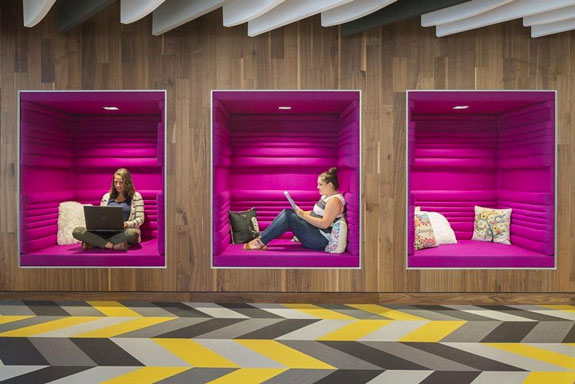
Image Credit: Boston Globe
From the Boston Globe:
Dyer Brown, an architectural firm, has designed cubbies as workspaces for the Boston offices of Criteo, a tech company…[carrying an aesthetic that’s] a bright pink cubby covered in comfy cushions.
The cubbies are “a very welcoming, inviting space that you want to be in,” said Jen Taylor of Dyer Brown architectural firm. “As people spend more time in the office, comfort is a priority. Creating these informal amenity spaces that replicate the comforts of home can help companies attract and retain talent…The bold color contrasts with the cozy vibe, and ties in with ‘‘the energy and excitement’’ of the company’s fun, young office culture, Taylor said.”
0 City Hall Plaza Readies for “Boston Winter”
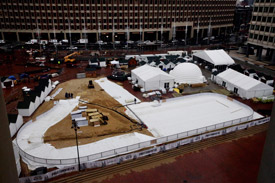
Credit: Boston Globe
Boston’s City Hall Plaza is in the midst of a transformation into a winter wonderland regardless of temperature.
According to the Boston Globe, “the dreary landscape will [soon] turn into something unrecognizable — a winter wonderland, with a giant ice skating loop, ‘chalets’ selling ornaments, chocolate fountains, and copious holiday decorations…’Boston Winter,’ which debuts Friday, seems like a smaller version of New York’s impressive Bryant Park. Though less ambitious than originally planned — the restaurant and ‘iconic observation wheel’ proposals envisioned for next spring were scrapped due to logistics and finances — the site is the realization of Mayor Martin J. Walsh’s vision to reinvent the plaza.”
The full article is available on the Globe, here.
0 Walsh Has Visions on ‘Boston Building Boom’
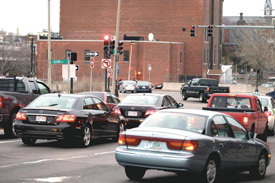
Credit: Boston Globe
Mayor Walsh is planning an update to the city’s master plan, which was last updated in the 1950’s. The concern is how do manage the growth of the daytime and nighttime population while maintaining efficient access for commuters and tourists.
From the Boston Globe:
Boston’s building boom will need to stretch into some of the farthest reaches of the city to keep pace with a population that could hit 800,000 by 2050, according to a new citywide master plan the Walsh administration previewed Thursday.
A draft of the plan, called Imagine Boston 2030 envisions new neighborhoods emerging from underdeveloped pockets of a city that is bursting at the seams in more central locations. Walsh officials said they will use the master plan to sustain and redirect growth more evenly around the city, and to attack seemingly-intractable challenges, from pricey housing, to traffic-choked streets, to rising sea levels.
One key element of the 300-page document is “expanding neighborhoods,” in which a half-dozen pockets, mostly on the outer edges of the city, would be targeted for large-scale mixed-use development. Many of these locations already have good access to public transit, city officials point out, and have lower land costs to allow for more moderately-priced housing. That would help relieve pressure on more popular neighborhoods where prices have soared.
0 Boston and Cambridge Office Space Retain Demand
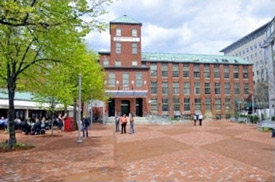
Kendall Sq. Office building
The rest of the country should follow us, at least for how we develop and occupy our office buildings here in Boston and Cambridge commercial real estate markets.
From Nerej.com:
The Boston office market itself is a text book for the office market of the 21st century…the city of Boston will have its fourth straight year of over 1 million s/f of absorption and has a 7.2% vacancy rate.
Cambridge is a story unto itself. This is a 23.7 million s/f market with a 3.8% office vacancy and 3.0% lab vacancy. The market is completely out of space.
0 Reebok Moves HQ from Canton to Boston
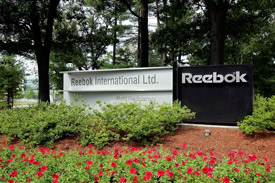
Credit: Boston Globe
Another major corporate tenant is on the move to Boston. Reebok will surrender is corporate campus life in Canton for a vibrant urban feel.
From the Boston Globe:
Reebok, the athletic shoe and apparel company, plans to shift about 700 employees from Canton to a new headquarters in the city…Reebok president Matt O’Toole said the company is still reviewing a few sites in Boston, all in existing buildings and accessible to southern suburbs and mass transit.
O’Toole cited two reasons for the move. Adidas wants to “clarify the roles” of its offices in the United States. And Reebok wants to be in a vibrant urban area where millennials are eager to work and live. The average age of Reebok employees in Canton is under 30, and many live in Boston already, he said.

